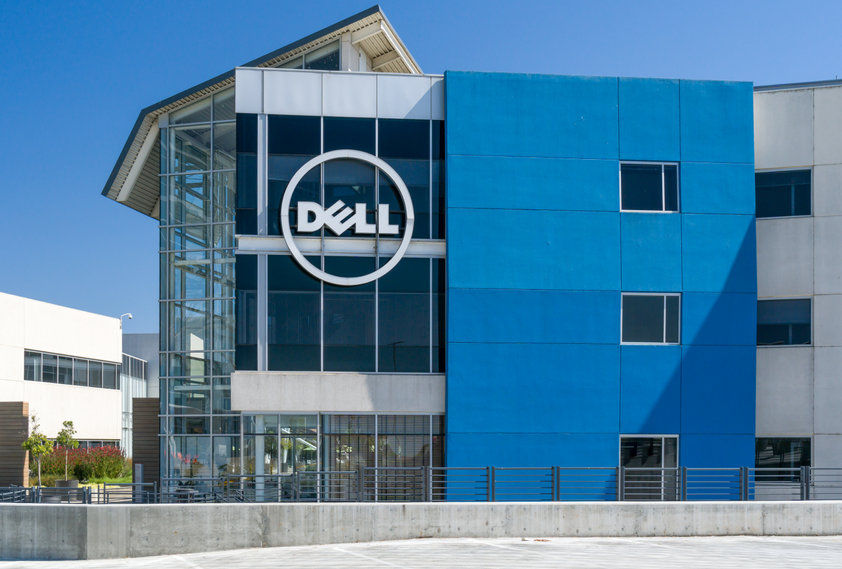Dell Technologies (NYSE:DELL) rejoined the S&P 500 Index on September 24, marking its return after an 11-year absence since going private in 2013.
This milestone aligns with the company’s 40th anniversary, underscoring its sustained leadership in PCs, data center infrastructure, software, and services.
Analysts are optimistic about Dell’s prospects. Citigroup has maintained a buy rating with a $160 price target, citing the company’s enterprise value-to-EBITDA multiple of 9.8.
UBS has named Dell as its top pick in Hardware and Electronics Manufacturing Services, emphasizing its strength in AI-focused servers and the upcoming PC refresh cycle.
Mizuho Securities initiated coverage with an Outperform rating and a $135 price target, noting Dell’s diversification across PCs and storage as a long-term value driver.
Evercore ISI analyst Amit Daryanani assigned an Outperform rating with a $140 price target, highlighting the company’s impressive performance that should alleviate investor worries about margins.
Dell’s diverse portfolio allows it to leverage synergies across PCs, storage, and services, potentially offsetting margin challenges in AI servers.
Dell Q2 earnings
In its recent second-quarter earnings report, Dell exceeded expectations with revenue of $25.03 billion, up 9.2% year-over-year and surpassing estimates by $910 million.
Non-GAAP earnings per share reached $1.89, beating forecasts by $0.18. The Infrastructure Solutions Group reported record revenue of $11.6 billion, a 38% increase from the previous year, driven by a significant 80% rise in servers and networking revenue to $7.7 billion.
Diluted earnings per share grew by 86% year-over-year to $1.17.
Dell’s momentum in artificial intelligence contributed substantially to these results.
The company shipped $3.1 billion worth of AI servers in the quarter, with the AI server backlog standing at $3.8 billion and the pipeline expanding to several multiples of this backlog.
Dell’s AI-optimized server revenue surged 23% sequentially, underscoring strong demand.
To enhance efficiency, Dell plans to continue reducing its overall headcount throughout fiscal 2025, including limiting external hiring.
The company expects fiscal 2025 revenue between $95.5 billion and $98.5 billion.
Dell has also demonstrated strong cash flow generation, returning $9 billion to shareholders through stock repurchases and dividends since fiscal 2023.
The declared quarterly dividend remains at $0.445 per share, yielding approximately 1.53%.
Despite concerns about margin compression due to increased competition and Nvidia’s pricing power, analysts believe Dell is well-positioned to mitigate these pressures.
Dell stock valuation
Dell’s valuation appears attractive compared to industry peers. The forward non-GAAP price-to-earnings ratio is 15x, significantly below the sector median of 24x.
The forward price-to-earnings growth (PEG) ratio stands at 0.20, compared to the 0.85x sector median, suggesting the stock may be undervalued and offering a margin of safety for investors.
These metrics indicate that Dell may only require moderate free cash flow growth to justify its current stock price, providing potential upside for shareholders.
Considering the company’s strong financial performance, positive analyst outlook, and favorable valuation metrics, it’s worth examining how these fundamentals translate into the stock’s price movement.
Let’s turn to the technical analysis to explore what the charts reveal about Dell’s potential trajectory.
Dell stock: weak after May high
Dell’s stock hit an all-time high in May of $179.70 after relisting, but it has since dropped significantly, reaching a low below $90 in August.
Source: TradingView
While the medium- and long-term charts show weakness, the rally from the August lows has turned the stock bullish in the short term.
For investors with a bullish outlook, a small long position can be considered at current levels, with a stop loss set below the August lows.
They can add more to their position if the stock closes above its 200-day moving average.
On the other hand, bearish traders have a low-risk opportunity to capitalize on the medium- and long-term downtrend by shorting the stock near $118, with a stop loss above $127.60.
If the longer-term trends prevail, the stock could drop below $90, offering a chance for traders to take profits.
The post Will Dell’s reentry into S&P 500 after 11 years push its stock higher? appeared first on Invezz

